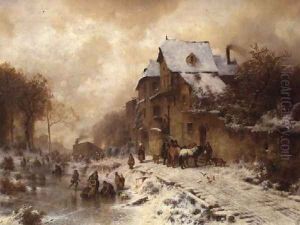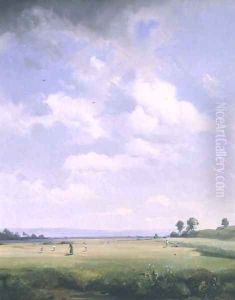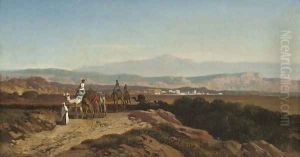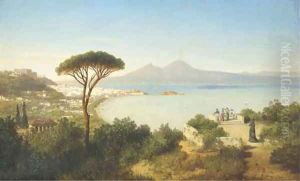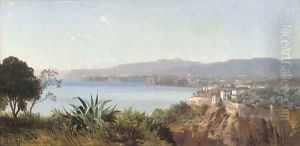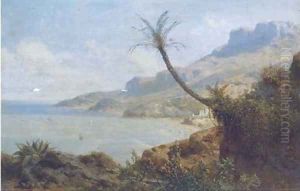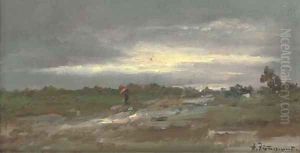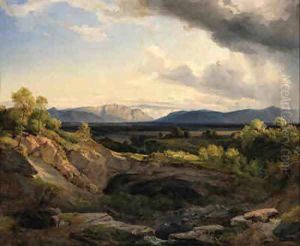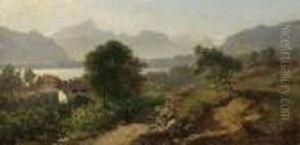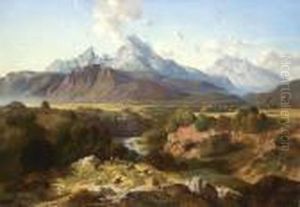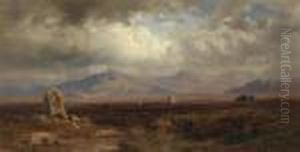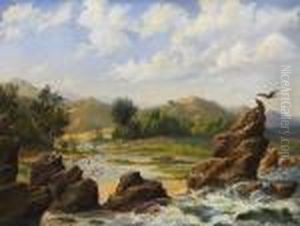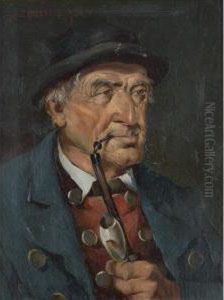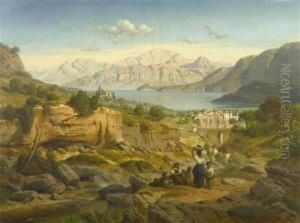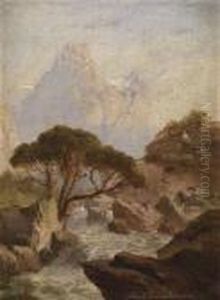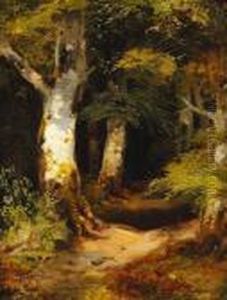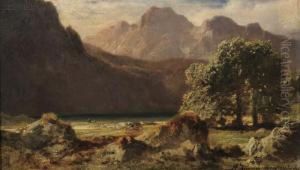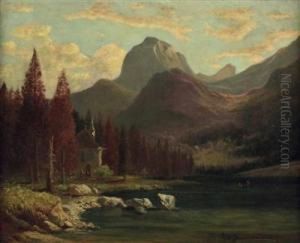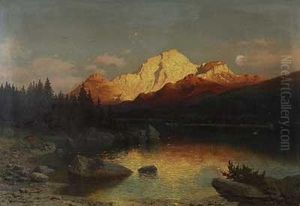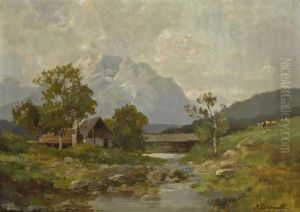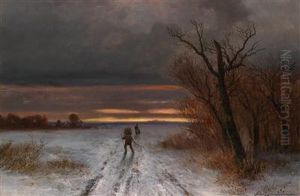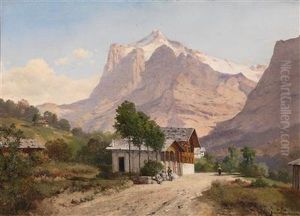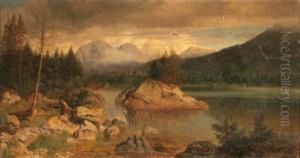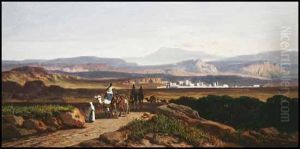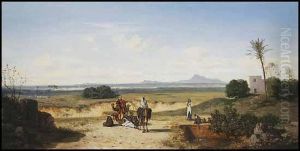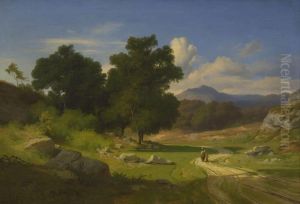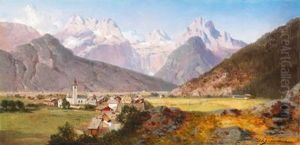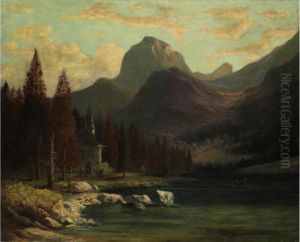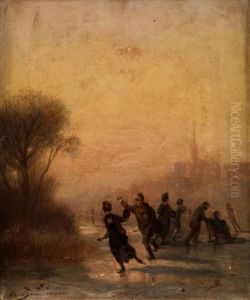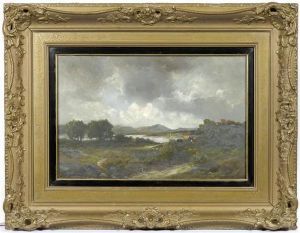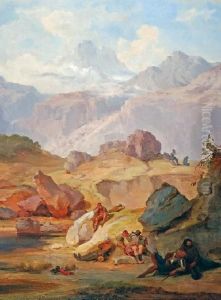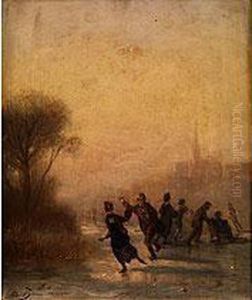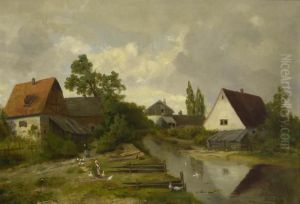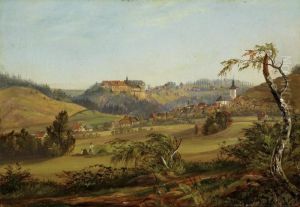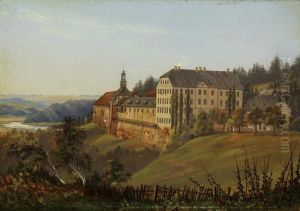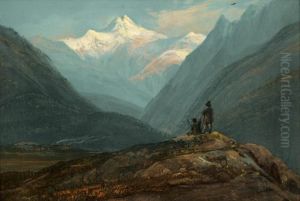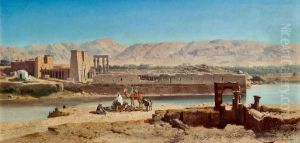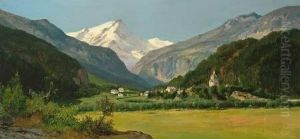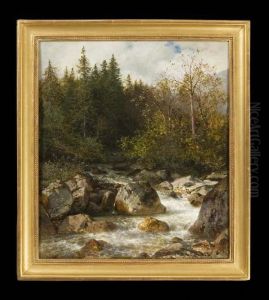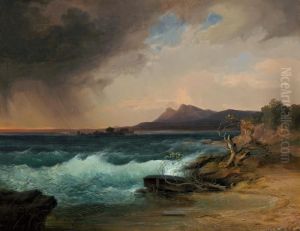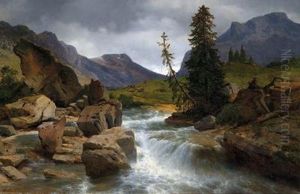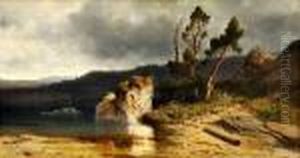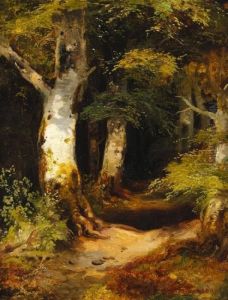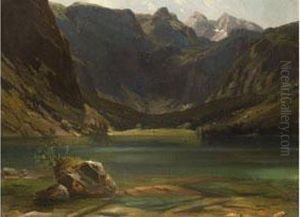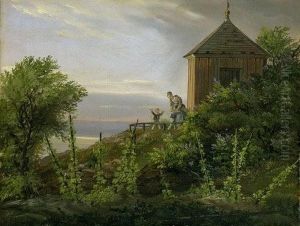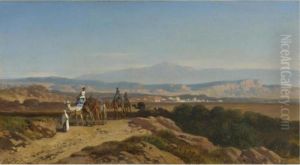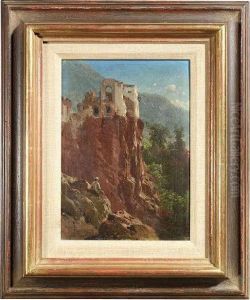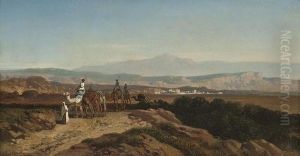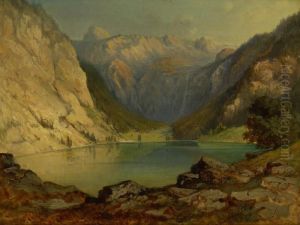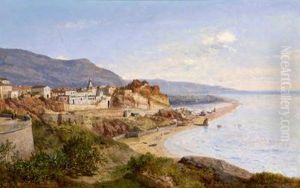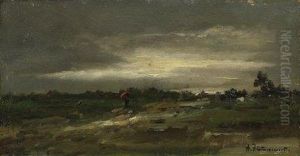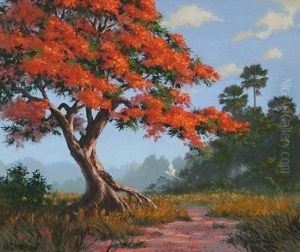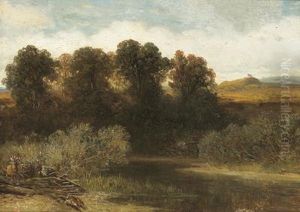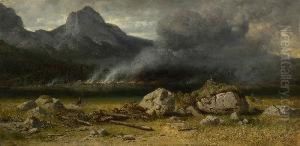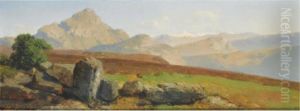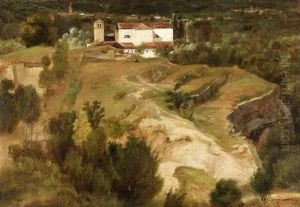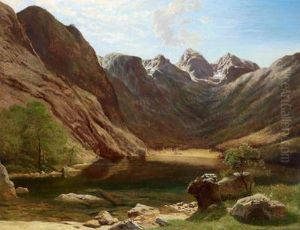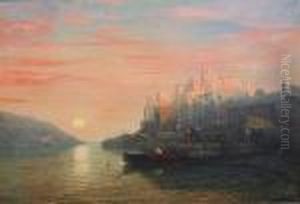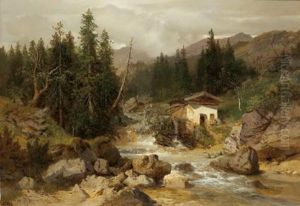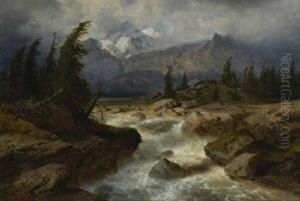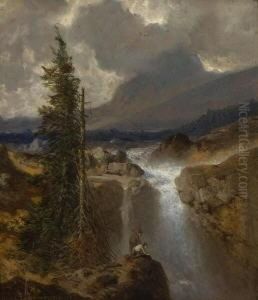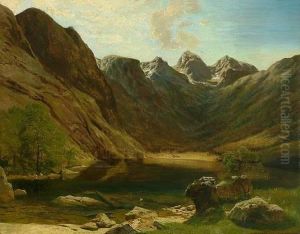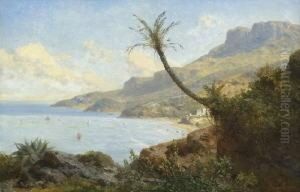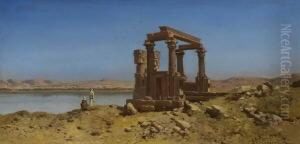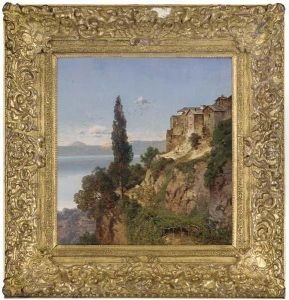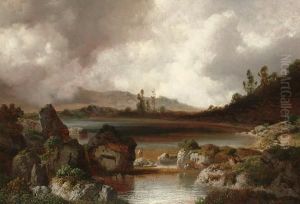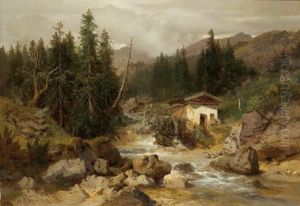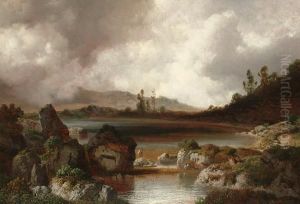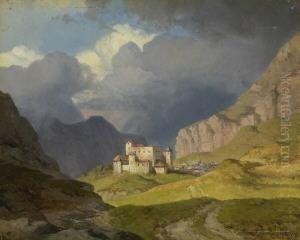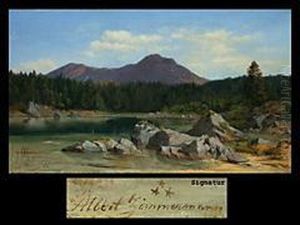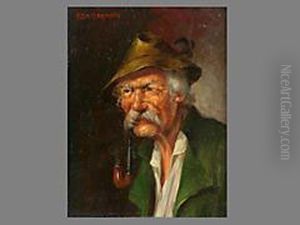August Albert Zimmermann Paintings
August Albert Zimmermann was a notable German landscape painter born on September 20, 1808, in Zittau, which was then part of the Kingdom of Saxony. He developed an early interest in art, which was supported by his parents. Zimmermann received his initial training at the Academy of Arts in Dresden, one of the premier art institutions in Germany at the time. He later moved to Munich, which was another center for artistic activity, to continue his studies.
In Munich, Zimmermann was able to refine his skills and was influenced by the works of other landscape painters of the era. He became known for his impressive landscape scenes, which often depicted the grandeur of nature with a romantic sensibility. His paintings showcased a masterful use of light and shadow, creating atmospheric depth and realistic portrayals of different times of day and seasons.
Zimmermann's talent earned him a significant reputation, and he was appointed as a professor at the Academy of Fine Arts in Munich. He was an influential teacher, and his guidance helped shape the skills of future artists. Among his students were his younger brothers, Richard and Max Zimmermann, who also became accomplished landscape painters.
Throughout his career, August Albert Zimmermann traveled extensively, which allowed him to capture a variety of landscapes in his work. His travels took him to Italy and the Netherlands, where he was inspired by the local scenery and the works of Dutch and Italian masters. His Italian landscapes, in particular, received great acclaim for their vividness and attention to detail.
Later in life, Zimmermann moved to Salzburg and then to Vienna, where he continued to work and exhibit his art. His works were well-received, and he gained a number of patrons who admired his ability to evoke emotion through his depictions of the natural world.
Zimmermann died on October 18, 1888, in Munich. His legacy lives on through his contributions to the art world, and his paintings can be found in various art collections and museums across Europe. His influence extended beyond his own works, as he played a significant role in the development of landscape painting in the 19th century, particularly in Germany.
